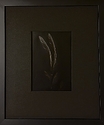Without a densitometer I suggest OP take the opportunity to not do the silly EI test, which is little more than a densitometry exercise in the first place.
The practical way to determine if you need an EI that differs from ISO is by making negatives and printing them. If you consistently find yourself struggling with thin shadows, decrease EI. If you consistently find yourself printing down, increase EI.
It should be a determination from tone reproduction rather than an arbitrary criterion.
EDIT: TYPOS
This.
The speed point is just the attempt to make a formula out of a consensus of what makes a good print. It's not some objective measurement to the material. So might as well just skip it and make a bracketed shot and choose what you like.










